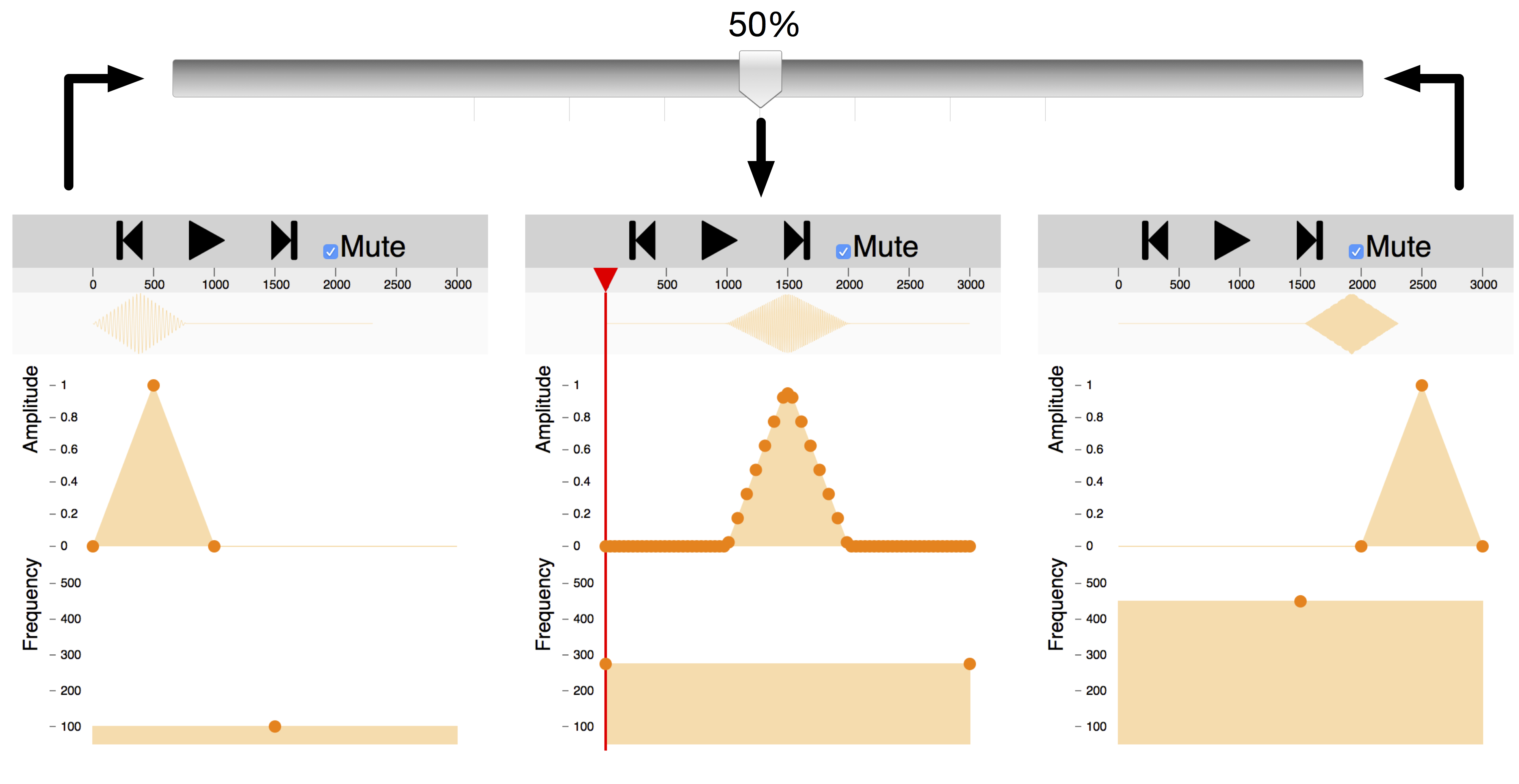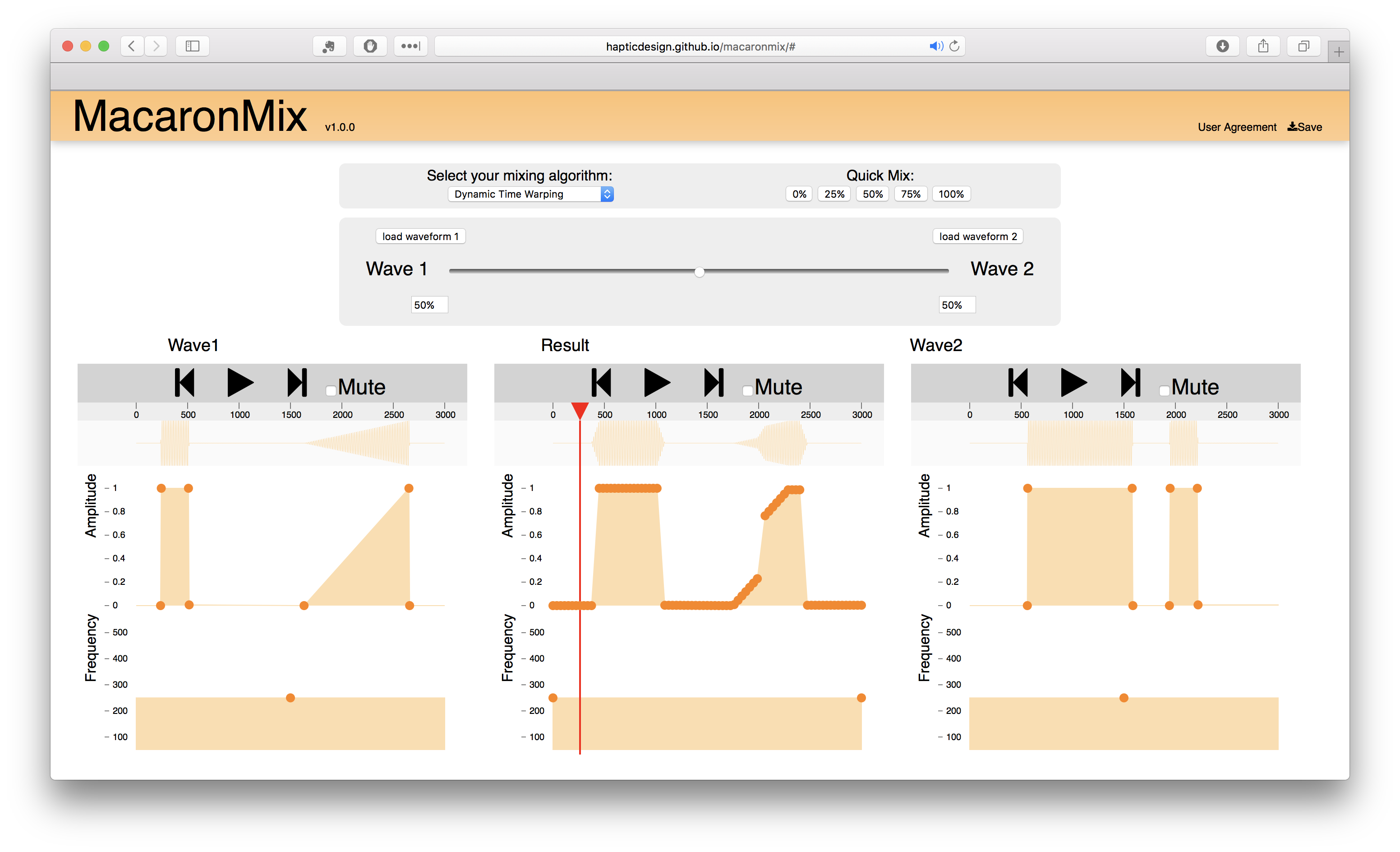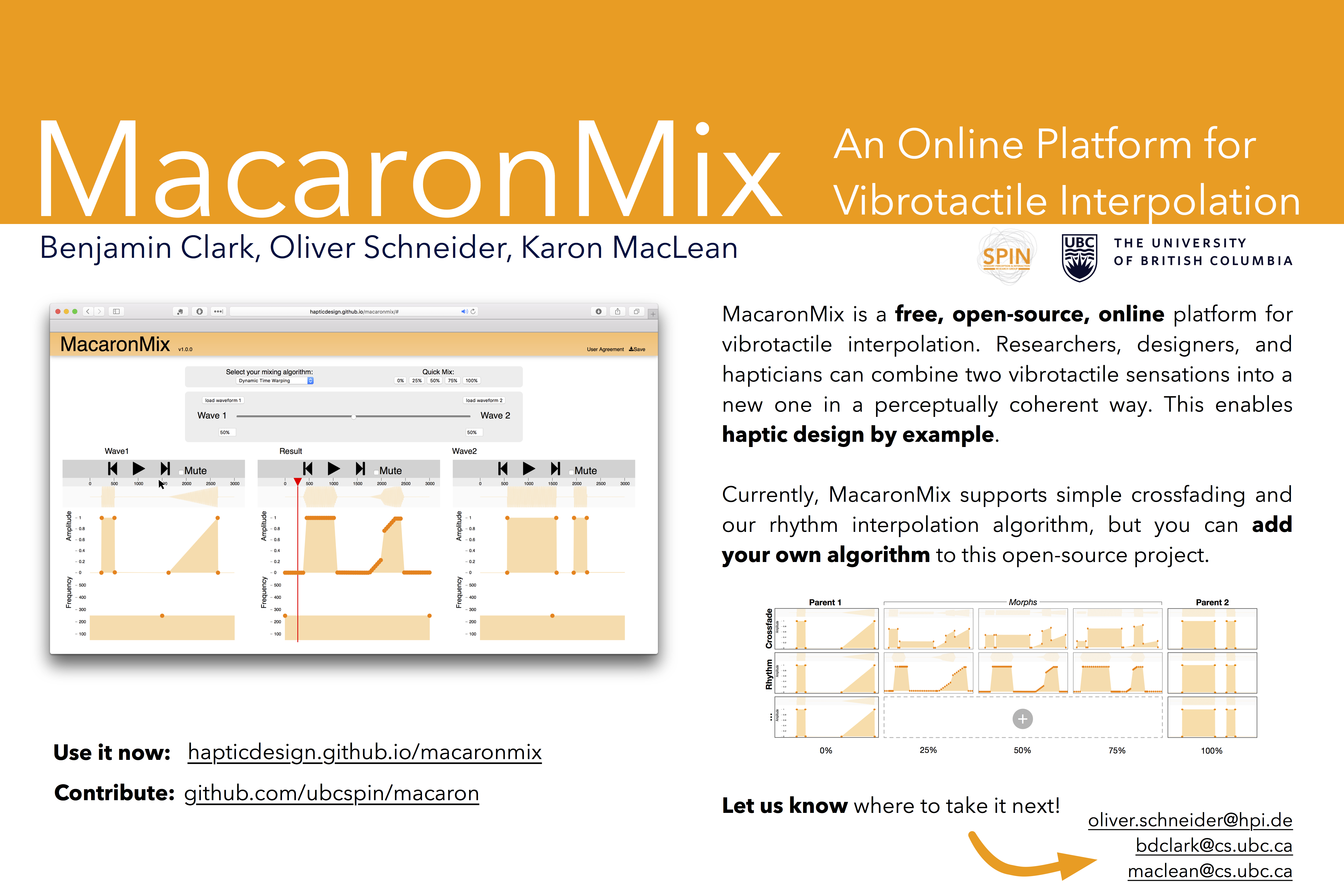MacaronMix: Rhythm Interpolation
 (with UBC SPIN lab)
(with UBC SPIN lab)
Morphing - combining two pieces of media into a third in-between one - is a powerful technique for creative control over images and audio. Can the same work for the sense of touch? We developed a new algorithm based on dynamic-time warping to morph rhythm profiles of haptic icons. We then compared it to simple cross-fading.

To evaluate these algorithms, we propose perceptual criteria: morphs must be predictable, related to their parents, and distinguishable, something new and distinct from their parents. We evaluated and compared these algorithms in two studies, finding that our new rhythm algorithm is more predictable than cross fading, and discovering conditions where it is distinguishable.

We put these algorithms into a online, open-source tool called MacaronMix. Designers, researchers, and hapticians can use this tool to create and study haptic icons, and to develop new morphing algorithms.Predictable and Distinguishable Morphing of Vibrotactile Rhythm

Paper
- Predictable and Distinguishable Morphing of Vibrotactile Rhythm. 2016. Benjamin Clark, Oliver Schneider, Karon MacLean, Hong Z. Tan. World Haptics Conference (WHC) 2017. Fürstenfeldbruck, Germany.
Paper: PDF IEEE
Slides: PDF
Tool (beta): http://hapticdesign.github.io/macaronmix/
Abstract
Vibrotactile (VT) icons are a ubiquitous, increasingly expressive and expected communicative element of many user interfaces, routinely deployed with technology from rumble motors to novel expressive tactile actuators. However, it is still difficult to design, customize, and experiment with VT feedback. Here we consider manipulation of one of the most salient VT design elements, rhythm, through perceptual morphing.
The ability to create perceptual morphs between pairs of VT signal parents expands editorial scope and precision for designers, end-users, and hapticians. To assess perceptual morphs, we propose criteria of predictability – a morph has similarities to one or both parents; and distinguishability – a morph is different from its parents. We developed a new algorithm for perceptual rhythm morphing based on dynamic-time warping (DTW), implemented in an open-source online tool, MacaronMix. Two studies revealed limits and conditions under which DTW-produced VT rhythm morphs are predictable and distinguishable.
Demo Poster
